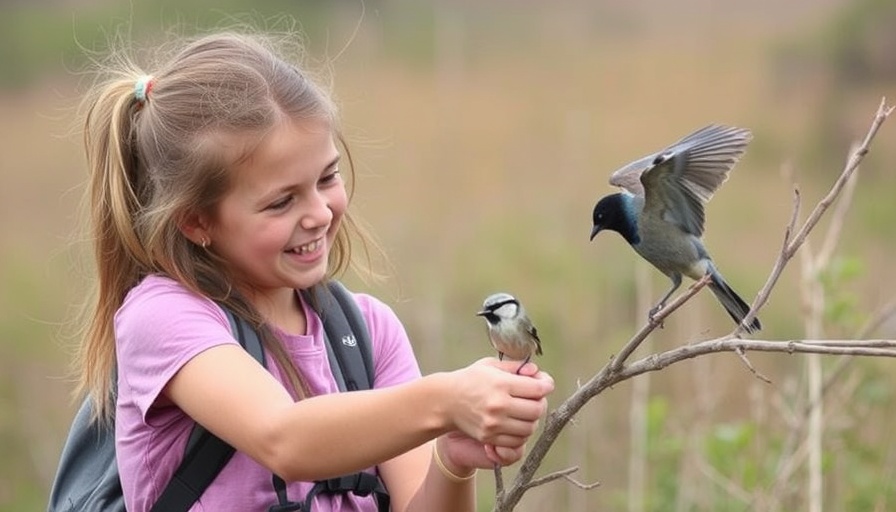
A Magical Connection Through Birding
Birdwatching often transcends mere observation; it can foster deep familial bonds and inspire nostalgia. Nicole Jackson, an environmental educator, provides a moving narrative of bonding with her mother through their shared appreciation for birds. During a visit home in May 2021, Nicole's ordinary backyard encounter evolved into a profound moment of connection when she spotted a Blackburnian Warbler—an uncommon sight for many. The vibrant colors of this small bird ignited her excitement and opened a doorway to a world of discovery for her mother.
Engaging with Nature Together
Nicole's experience showcases how a casual stroll in the garden can turn into a memorable learning session about nature. After spotting typical birds like American Robins and Blue Jays, the addition of the vibrant warbler sparked curiosity from her mom, who had been largely unaware of the avian diversity around her. This illustrates how education can flourish in personal spaces—or as part of day-to-day life, revealing beauty that often goes unnoticed.
The Power of Technology in Birdwatching
Introducing her mother to technology, specifically the Merlin Bird ID app, further deepened this bonding experience. This user-friendly application enabled her mom to identify birds more easily and document her first bird sighting, evoking an infectious enthusiasm. This moment of sharing not only reinforced their relationship but also harnessed the power of modern tools for educational purposes, making birding accessible to all ages.
Connecting Generations Through Nature
In a world increasingly shaped by digital interactions, Nicole's story serves as a reminder of the enriching moments that can arise from nature engagement. As Black Birders Week draws attention to diversity in birding communities, it promotes the essential notion that birdwatching is not solely an individual hobby but can also be a cultural and familial unifier. This time spent watching for birds is not simply an activity; it becomes a lasting memory, filled with laughter and shared joy.
Reflecting on Shared Interests
Nicole's joyous recounting of her experience reflects a universal theme—the importance of nurturing family connections through shared interests. Whether it's birding, cooking, or any other hobby, finding common ground allows for bonding moments that can create irreplaceable memories. As we engage with our loved ones, we foster deeper relationships born from collaboration, respect, and discovery.
Ultimately, Nicole's story encourages readers to embrace the beauty of nature while fostering connections with family. As we approach future outdoor endeavors, consider the interactions and stories waiting to be shared with loved ones. By nurturing these relationships, we can illuminate our lives with the wonderful experiences nature has to offer.
 Add Row
Add Row  Add
Add 




Write A Comment